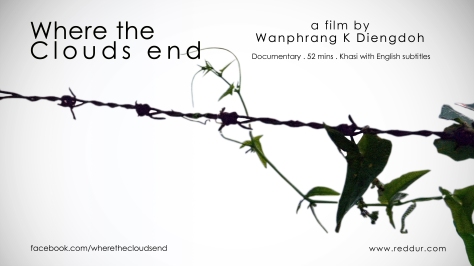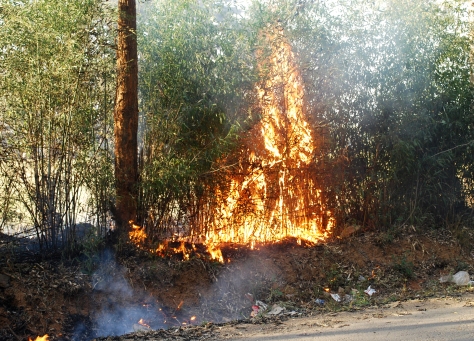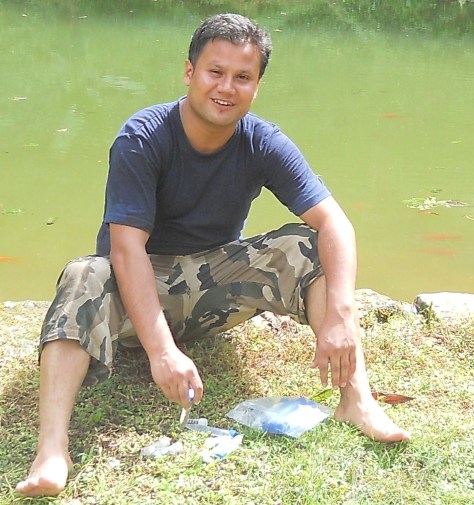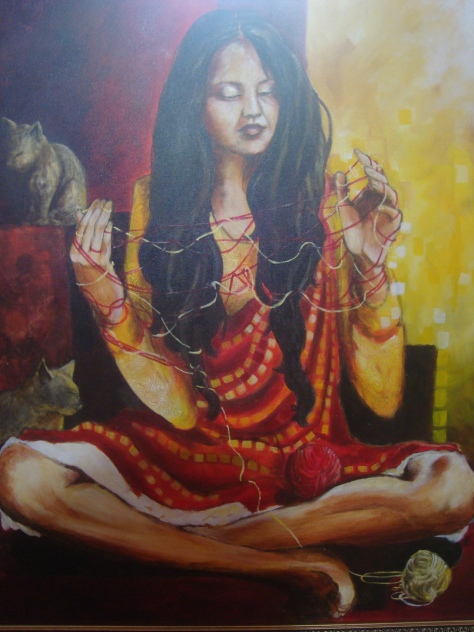Filmmaker Wanphrang K Diengdoh believes in the ‘insurrectory power’ of the documentary form, says Nawaz Yasin Islam.
JANUARY 21, 1972. A buzzing excitement grips the abode of clouds and the most memorable lines on this day could possibly be that of Prime Minister Indira Gandhi, who in a crackling voice over the microphone, declared, “A new stage in your history has opened.” This not only defined the creation of a new state but also set up a demarcation of ‘where the clouds end’. The hypnotizing narratives that introduces one to the movie, whisks you away to the past but gently guides you to matrilineal Meghalaya, a land of the Khasi race.
Wanphrang K Diengdoh who has come up with his second film, ‘Where the clouds end’, this year following his earlier release, ‘1987’ attempts to understand the struggle for Khasi identity by looking at the different strands of cultural interface that the Khasi society has gone through, beginning with colonialism, post colonialism, struggles for political autonomy and of course the unavoidable present day politics of development.
Neatly crafted into three subtle chapters, whose titles are the pillars of the Khasi traditional faith, Diengdoh constructs the movie on the foundation of the basic understanding of the Khasi identity and the matrilineal society which through the later stages culminate at the debatable topic of ‘fear of outsiders’, plaguing the society today. The film attempts to look at how the ideas of culture and man-made concepts of identity are fluid in nature, a human transition which is generally never questioned. In support of this view is the ritual of Tang Jait which incorporates a non-tribal, non-Khasi into the community. The rationale here is that the Khasis, as a community, had inter-married with those of other races. So Diengdoh asks why is it that all of a sudden the idea of intermarriage with someone from outside the community, become a problem now?
“Sometimes we are fed with so much Nationalism that we do not question things anymore. Why is there a boundary?” questions Diengdoh who however believes in the rights of the people. Diengdoh tries to elaborate the debatable tag of outsiders who are not only detested in the present day but are feared to an extent that the wiping out of a race seems inevitable if outsiders are not ‘weeded out’. “We should not look at things from a racist perspective. There are two types of outsiders. One who integrates with the local population like migrant labourers. Then you have the other kind of outsiders who come under the banner of development and exploit. They are by far more dangerous!” highlighted Diengdoh.
The idea of purity has also been addressed in his film. Traditional tribal laws show that there is always room for an outsider though specific integration processes. There are Khasi families living in Bangladesh who only converse in Bengali, questions do arise on the purity of such families if language is taken as a barometer to measure identity and purity. Culture or traditional practices are always fluid. The traditional Khasi faith is also questioned in the sense that most of the ideas were borrowed.
Counter arguments to the advent of outsiders in the State has always been the banner of development to which Diengdoh reiterates that development has been concentrated for the ruling class and it makes more sense to start bottom up. Free health, free education are just some of the developmental activities that can be brought about by the Government first before depending on outside companies.
Shifting into a different gear, Diengdoh, on being asked about the sizeable population of Khasi Muslims in the State who are gradually being accepted said, “Muslims have been in the space prior to the existence of the International boundary. To imagine that the coming of Islam is very recent is problematic. This is however different from the issue of influx.”
At certain levels, fear of Muslims has also gripped the State. In the recent context, the demolition of the twin towers, terrorist attacks in the country and even the Babri Masjid demolition has tinted the image of Muslims throughout the country. Diengdoh in justification asserts, “The power of propaganda and media is only highlighted when we see that the fear of a person in a skull cap resonates to smaller spaces like our state!”
Diengdoh seems to be least surprised by the conflicts that Meghalaya witnesses these days. The lines which divide spaces, he says, are sometimes blurred because human beings are constantly in motion, sometimes “trespassing” into others’ territories. In the process, when one crosses someone else’s political or personal space, a confrontation is bound to happen.
“A repressive society will always create its own elements and disillusioned youth always make the best foot soldiers,” mentions Diengdoh who feel that student bodies have certain dissenting voices which definitely need to be heard by the powers that be. The film is non-judgmental, as all films should be, leaving the audience with more questions as they figure out their own dilemmas. A mere 52-minute film surely can’t solve problems but can definitely make people introspect. An important issue of Diengdoh’s film is land allocation for development purposes and its implications. This topic has been touched in context of the New Shillong Township.
Talking about the ramifications of strict geographical borders, the conversation invariably turns to the debate over Inner Line Permits (ILP). Very recently, pro-ILP groups submitted a representation to the Meghalaya government that included certain measures to ensure that “illegal influx” remains in proper check. Diengdoh feels that question put to the Government could be remodeled as, “who does the idea of borders benefit the most and whom are these laws intended for?”
The ILP was an offshoot of the Bengal Eastern Frontier Regulations 1873, which basically ensured that the tea plantations of the British were not disturbed by other “British subjects”, thus ensuring the Empire’s own commercial interests by negating any competition.
The film does not jump into radical conclusions. It does, however, raise questions that are usually unasked. ‘Where the clouds end’ documents the Khasi struggle to claim an authentic ethnicity, racial purity and right to land. It challenges stereotypical notions portrayed by the media of the unwanted ‘outsider’ who threatens traditions, social structures and moral values. “Once these questions are asked and answered, the future will be written by the people themselves,” says Diengdoh.












